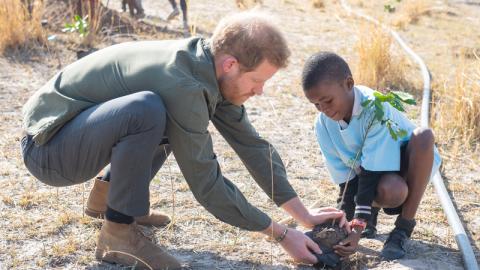
On July 25 in Addis Ababa, Ethiopian Prime Minister Abiy Ahmed picked up a spade and started to dig a hole. When he was finished, he gently lowered a sapling into the hole he had dug, and then covered its roots with the loose soil. The tree that he had just planted was one of 350 million planted in Ethiopia that day, part of an unprecedented push to reforest the country — and, in the process, save the world from the climate apocalypse.
Unfortunately, it’s a little more complex than that.
The idea that the world needs to plant more trees is not controversial.
Trees suck carbon out of the atmosphere, storing it in the earth instead. So if we plant enough new forests — these would need to cover as much as one-third of all the land in the world, some estimates suggest — we should be able to prevent the planet from becoming any hotter.
This is the premise of a recent paper published in Science, an academic journal. In it, researchers led by Jean-François Bastin, a Swiss-based academic and self-described “tree doctor”, say that the Earth is capable of supporting an extra 900-million trees. These new forests would capture and store 205 gigatonnes of carbon dioxide in the next century (that’s equivalent to two-thirds of all the carbon dioxide generated by humans since the industrial revolution, according to Scientific American).
But where to find so much available land? Attention in recent years has focused on Africa, the grassiest continent, whose wide, empty savannahs can be transformed into enormous forests with relative ease. The African Forest Landscape Restoration Initiative, which styles itself as AFR100, aims to do exactly that: it has secured $1.4-billion in funding from the likes of Germany and the World Bank to pay African leaders to reforest 100-million hectares of African land.

